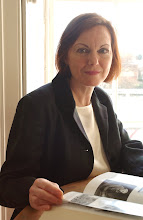
 In a blog last May I discovered some intriguing information about Dr Shuckburgh Roots (1785-1861) who lived at 42 Russell Square in the 1830s and helped in a pioneering operation to repair the disfigured nose of a 40-year-old shoemaker. In searching the web for more information about Dr Henry Shuckburgh Roots, I came across a post by Brian Shuckburgh (2002) also searching for connections to his ancestor. I had hoped that Brian would see the blog and indeed he did and contacted me a week or so later. Brian lives in Honolulu but originally came from Kingston-upon-Thames, home of many Shuckburghs and Roots dating back to the 17th century.
In a blog last May I discovered some intriguing information about Dr Shuckburgh Roots (1785-1861) who lived at 42 Russell Square in the 1830s and helped in a pioneering operation to repair the disfigured nose of a 40-year-old shoemaker. In searching the web for more information about Dr Henry Shuckburgh Roots, I came across a post by Brian Shuckburgh (2002) also searching for connections to his ancestor. I had hoped that Brian would see the blog and indeed he did and contacted me a week or so later. Brian lives in Honolulu but originally came from Kingston-upon-Thames, home of many Shuckburghs and Roots dating back to the 17th century.Members of the Roots family came to England with William of Orange in 1688 (the name was originally de Rutz), and settled in Kingston. The Shuckburghs were also an old family, one member being Master of the Kings Buck Hounds under Henry VIII, a circumstance that apparently explained the adoption of the hunting horn as the family crest.
Henry, whose father George was also a doctor, became a Fellow of the Medical and Chirurgical Society (later the Royal Society of Medicine) in 1819. By 1853 he was consulting physician to St Thomas’s Hospital, London, and apparently no longer living at 42 Russell Square. I have found one article by Henry Shuckburgh Roots in the Lancet (1823), in which he tries a number of treatments for an enlarged thyroid in a 19-year-old girl, including the regular application of leeches to the thyroid. Eventually, after attending a talk by Dr Roget, who recommended the use of iodine to reduce the size of the thyroid, he successfully applied this remedy and subsequently reported his results. Interestingly, Dr Peter Mark Roget (1779-1869) was not only a medical doctor but also the creator of the famous thesaurus which bears his name. From 1808, Roget lived at 30 Bernard Street, Bloomsbury (just off Russell Square), with his mother and sister but later moved to 18 Upper Bedford Place (now Bedford Way), Bloomsbury, where he remained until his death.
At the end of Henry Shuckburgh Roots’ paper he gives his address as Grenville Street, Brunswick Square, only a few hundred metres from Russell Square.
The top picture shows a doctor applying leeches to a patient's neck in 1827, about the same time as Dr Roots would have doing the same thing to his teenage patient. The photograph below is dated 1924 and shows a physician using calipers to measure an enlarged thyroid (also called a goitre) in a young girl.
